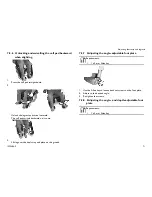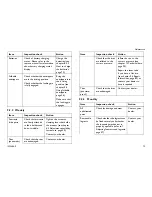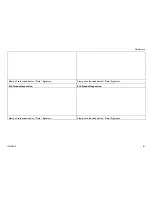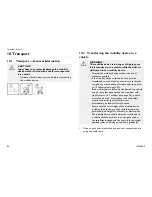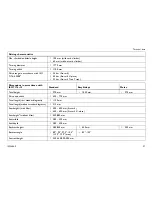
Maintenance
Re-assembly is done in reverse order. Ensure that the tire is
replaced on the same side and in the same travel direction as
it was previously mounted.
Repairing the flat tire
CAUTION!
Risk of explosion
The wheel will explode if you do not let the air out of
the tire before removing the wheel.
–
Always let the air out of the tire before removing it
(press in the pin in the middle of the valve).
1.
Unscrew valve cap.
2.
Depressurise tire completely by pressing in the pin in the valve.
3.
Remove the 5 cylinder head screws (back of the wheel, 2)
4.
Remove the rim halves from the tire.
5.
Remove the inner tube from the tire.
6.
Repair inner tube and replace, or insert new.
If the old inner tube is to be repaired and re-used, and has
become wet during repair, you can make replacement easier
by sprinkling the inner tube with a little talcum powder.
7.
Insert the wheel rim halves from outside into the tire.
8.
Pump a little air into the inner tube.
9.
Reinsert the cylinder head screws and tighten to10 Nm. Avoid
crushing the inner tube!
10. Ensure that the tire outer is seated correctly.
11. Pump the tire up to the prescribed pressure.
12. Ensure that the tire outer is seated correctly again.
13. Screw the valve cap back on.
14. Refit the wheel.
9.4.2
Repairing punctures (drive wheel with GB
motor and pneumatic tires)
CAUTION!
Risk of injury
If the wheel has been insufficiently tightened during
assembly, it can become loosened during driving.
–
When reassembling the drive wheels, tighten the Allen
screws at a torque of 25 Nm.
Requirements:
•
Open-ended spanner 6 mm
•
Torque wrench
•
Repair kit for tire repair
or
a new inner tube.
•
Talcum powder
•
Screw blocker Loctite (e.g. Loctite 243)
1529686-P
83



